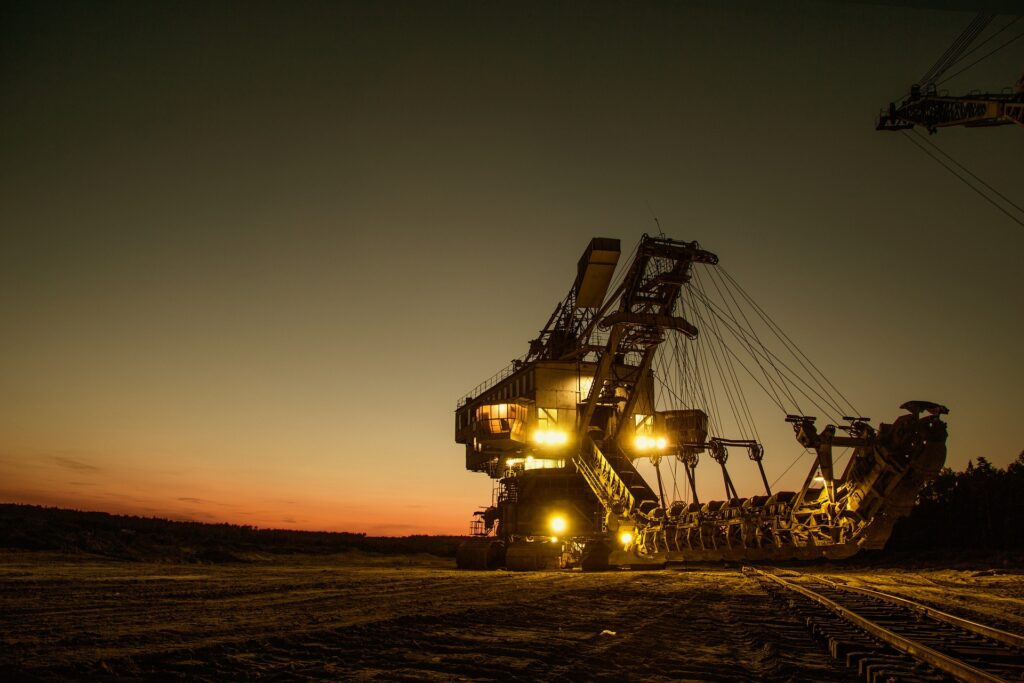The government’s long-term plan is to build 50 cities by 2050. Those metropolises would include multiple neighborhoods, gated complexes, commercial property, entertainment, offices and public spaces.
The New Administrative Capital, for example, can house between 6 and 6.5 million people. It will have some of the tallest and largest office spaces and entertainment facilities in Africa, plus other amenities to make this metropolis Egypt’s flagship city.
That will invariably create heavy demand for construction materials for years to come, weighing on the government’s budget. According to the General Organization for Export and Import Control, the government has been running a building materials deficit ranging from $4.2 billion to $6.9 billion between 2017 and 2021. In 2021, Egypt imported 62% of its construction material needs.
In 2023, there will be a lot of pressure on the government to import enough construction materials as Egypt faces a foreign currency crunch. Additionally, the pound’s ongoing devaluation means the cost of construction materials will likely increase quickly and dramatically.
For Egypt, a cooling off in global construction material prices in 2023 could be a slight reprieve for local developers. Alternatively, if international prices jump on supply fears or a surge in demand, that could be problematic for the sector.
International market experts are unsure what will happen in 2023. Larry Bernstein, a journalist for Asite, a construction platform, likened construction material prices to a “carnival barker spinning a wheel with the adage ‘where it stops, nobody knows.'”

The problem’s roots
Supply shortages and price instability of building materials started with COVID-19 lockdowns in 2020 amid rising demand for real estate. The problem extended into 2021 as China’s “Zero COVID-19” policy locked down cities much more frequently than in other countries, causing supply bottlenecks and further volatility.
Original forecasts for 2022 were that construction material prices would stabilize. But Bernstein said, “Unexpected events, including the lockdowns in China in the spring and the war in Ukraine, continued to rattle the supply chain.” The fallout from the latter added consistent pressure on supply chains. The lockdowns in China were” sporadic” events adding to stressing supply and raising prices until the government lifted lockdowns.
The Producer Price Index for September 2022 shows that “inputs of construction” increased by 40.5% compared to February 2020. The materials with the highest jumps were natural gas (497.6%), unprocessed energy materials (193.3%), steel mill products (91.3%), crude oil (84.2%), iron and steel (69.2%), and fabricated structural metal products (54.2%).

An unpredictable 2023
The factors destabilizing construction material prices in 2022 are expected to continue in 2023. For one, China, the world’s top manufacturer, abandoned its “zero-COVID” policy in early December, which means past flash lockdowns when a handful of COVID-19 cases appears is no longer. However, the country is witnessing a surge in cases and possibly new sub-variants of Omicron. Meanwhile, Europe is facing severe economic and energy crises as supply chain disruptions that surfaced in 2021 persist.
Two opposing market forces also could add volatility. On the one hand, there is a need for new homes to accommodate robust, increasing demand. On the other is a demand slowdown due to recessions caused by inflation. In October, CNN business reporter Alison Morrow said, “Markets are flashing warning signs that the global economy is teetering on a cliff’s edge. The question of a recession is no longer if, but when.” That invariably means people would postpone home purchases until their economies recover.
Robert Dietz, a chief economist for the U.S. National Association of Home Builders, said the shortage in the supply of homes would continue to drive demand. He noted in October that in the United States, the number of “new single-family and multifamily housing [permits] is up by a third since 2019.”
On balance, prices of raw materials could increase in 2023. Micheal Hardman, vice president of Turner & Townsend, a U.K.-based consultancy, expects prices to increase by 7% in 2023 compared to the end of 2022. Accordingly, construction materials will likely be 25% to 28% higher than in 2020, he noted.
However, these materials will not all increase at the same rate, said Rob Cantando, national director of strategic supply chains at Skanska, a Sweden-based contractor. “We see the [global construction materials] market going into different directions,” he told Construction Dive, a specialized publication. “Some are starting to recover, and you’ve got other ones that aren’t going to recover for a long time and [will] probably face even more challenges over the next year or two.”
Contando noted that cement, concrete, and drywall prices in 2023 would rise due to higher production costs. A report by Linesight, an Ireland-based global construction consultant, estimated cement and concrete production costs were 14% higher in the third quarter of 2022. Meanwhile, Gordian, a construction think tank, said drywall prices were up 8% during the same period for the seventh consecutive quarter.
Other construction materials will likely cool off in 2023, having peaked in 2022. “In [2022], we saw some extreme increases, such as copper prices increasing 44%,” said Hardman. “For some products, such as iron and steel, we saw prices [at the end of 2022] reduce slightly, in this case by 5%, but the cost still sits well above pre-pandemic levels.”
The other influential factor determining the price of construction materials in 2023 is supply chains. An October report by U.S. construction company Mortenson said, “construction supply chains … will be ‘unpredictable.'”
The report said the primary factor is transportation costs amid rising fuel prices in 2022 and whether they would stabilize in 2023. The other aspect is weather conditions, which can disrupt long-distance freight services and construction material producers.
The Mortenson report also noted unexpected world events and how far the geopolitical disruptions in Ukraine and Russia would extend, as both are “major exporters of metals and other raw materials.”
Clark Taylor, a vice president at Mortenson, said that as “kinks in the supply chain sort themselves out,” the hikes in building material prices should be 3% to 5% in 2023. However, he stressed companies “should plan for 6%.”
A report from Construction Risk Management predicted “overall cost inflation for material is expected to be cooling by the end of 2022 and largely return to typical levels by mid-2023. However, given the large number of construction inputs — many of which [are] subject to geopolitical risks such as tariffs and sanctions — costs for some materials may remain volatile.”







